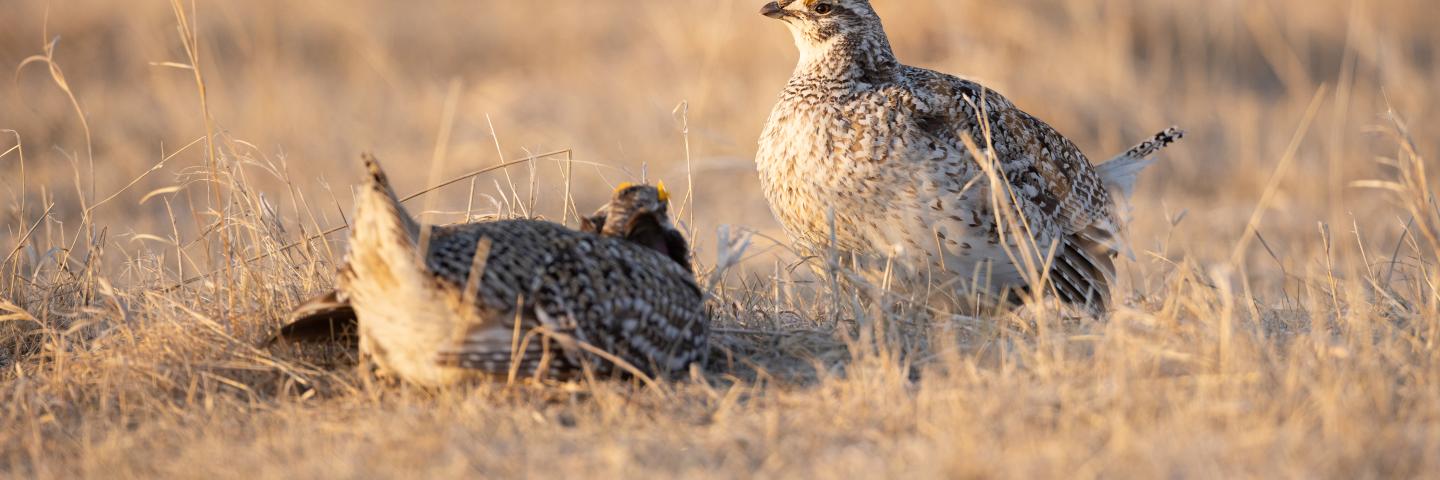
NRCS offers technical and financial assistance to help landowners manage existing or provide new wildlife habitat through the implementation of wildlife-friendly practices in working lands or restoring and protecting key landscapes.
Endangered and Threatened Species
Working Lands for Wildlife
Sandhills Working Lands for Wildlife Sandhills | Natural Resources Conservation Service
Working Lands for Northern Bobwhites
https://www.nrcs.usda.gov/programs-initiatives/working-lands-for-wildlife/northern-bobwhite
https://www.nrcs.usda.gov/sites/default/files/202210/Working_Lands_for_Northern_Bobwhite_web_r.pdf
Common Practices
- Conservation Cover (327)
- Early Successional Habitat Development/Management (647)
- Fishpond Management (399)
- Prescribed Burning (338)
- Restoration of Rare or Declining Natural Communities (643)
- Shallow Water Development and Management (646)
- Stream Habitat Improvement and Management (395)
- Structures for Wildlife (649)
- Upland Wildlife Habitat Management (645)
- Wetland Creation (658)
- Wetland Enhancement (659)
- Wetland Restoration (657)
- Wetland Wildlife Habitat Management (644)
- Wildlife Habitat Planting (420)
Refer to eFOTG Section 4 for more information on these practices.
Pollinator Resources
- Best Practices for the Monarch Butterfly Best Practices for the Monarch Butterfly.pdf (usda.gov)
- Important Plants of the Monarch Butterfly ImportantPlantsMonarchButterfly.pdf (usda.gov)
- Restoring Monarch Habitat Restoring Monarch Habitat (youtube.com)
- Pollinators in Natural Areas: A primer on habitat management Wildlands primer.pub (usda.gov)
- Farming for Bees Farming for Bees_2nd edition_photos.pub (usda.gov)
- Beautiful Pollinators video on NE NRCS Beautiful Pollinators (youtube.com)
Endangered & Threatened Species
The National Environment Policy Act (NEPA) was signed into law on January 1, 1970. NEPA requires Federal agencies to be accountable to the public for the environmental impacts of their actions.
The Council on Environmental Quality (CEQ) has written regulations that establish the procedures NRCS and other Federal agencies must follow to meet NEPA requirements.
These regulations require Federal agencies to follow a systematic process when a Federal action is proposed. Federally listed threatened and endangered species (T&E species), as well as state rare, T&E species and species of concern, fall in one of several categories NRCS must evaluate for impacts.
To meet the requirements of NEPA and NRCS policy, NRCS planners will conduct an Environmental Evaluation to determine the potential effects of alternative solutions to resource problems for all planning activities and document the results of the evaluation on form NRCS-CPA-52, "Environmental Evaluation Worksheet" or State equivalent, including the appropriate finding. In addition to NEPA, the NRCS has both the authority and the obligation under the Endangered Species Act (ESA) to protect and conserve plant and animal species listed or proposed for listing as endangered or threatened. Section 7(a)(1) of the ESA directs other Federal agencies to utilize their authorities to carry out programs for the conservation and recovery of federally listed threatened or endangered species. Section 7a(2) of the ESA requires NRCS, in consultation with and with the assistance of the Secretary of the Interior, to insure that its agency actions and activities do not jeopardize the continued existence of threatened and endangered species or result in the destruction or adverse modification of the species' critical habitat.
Threatened and Endangered Species | Nebraska Game & Parks Commission
Other Resources
- Wildlife Friendly Fences WildlifeFriendlyFences.pdf (usda.gov)
- Improving Fence Passage for Migratory Big Game TN 190-BIO-93
- Migratory Bird Treaty Act Migratory Bird Treaty Act of 1918 | U.S. Fish & Wildlife Service
- Bald and golden Eagle protection Act Bald and Golden Eagle Protection Act | U.S. Fish & Wildlife Service
- NE Natural Legacy Project Nebraska Natural Legacy Project | Nebraska Game & Parks Commission
- National Wild and Scenic River System – Nebraska Nebraska | Rivers.gov
Contact:
Ritch Nelson
Wildlife Biologist
402-437-4100

